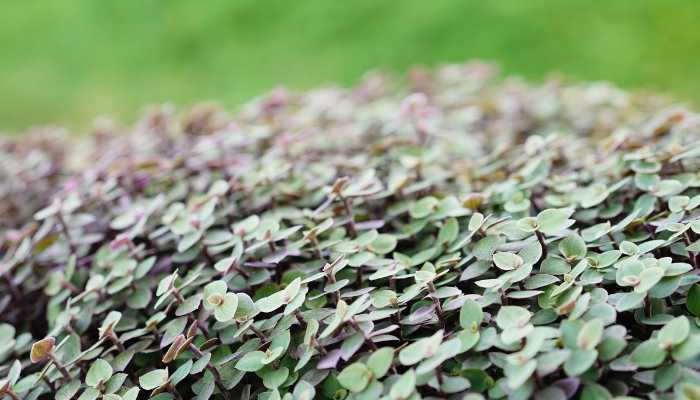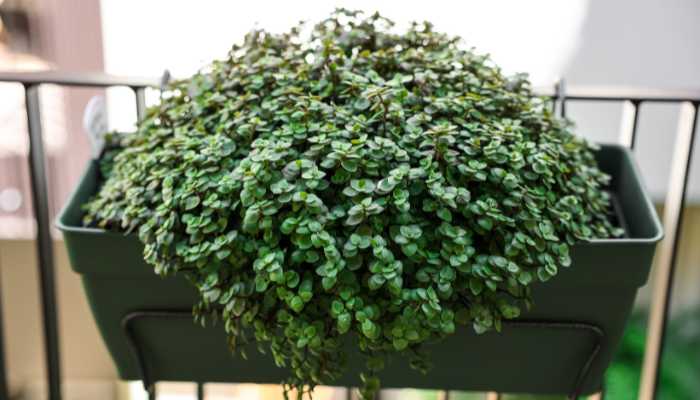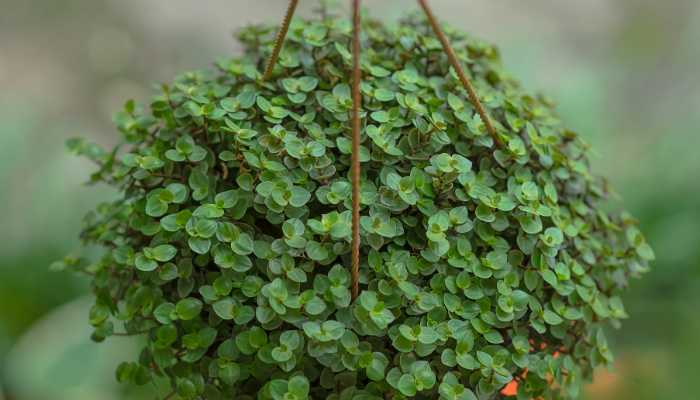Callisia repens, also known as turtle vine, is a delightful and easy-to-grow houseplant that can bring a touch of greenery to any space. Its trailing stems and small, fleshy leaves make it a favorite among plant enthusiasts.
If you are thinking about adding this attractive plant to your collection, you are in the right place. In this article, we’ll explore everything you need to know about Callisia repens growth and care. Let’s dive into it!
Callisia Repens Table of Contents
What is Callisia Repens?
Callisia Repens is a low-growing, trailing plant native to Central and South America. Its small, round leaves are bright green and sometimes have a hint of purple on the undersides.
This plant is known for its hardy nature and ability to thrive in various conditions, making it an excellent choice for both novice and experienced gardeners.
Benefits of Growing Callisia Repens
Growing Callisia Repens offers several benefits. Not only is it an attractive addition to any indoor or outdoor garden, but it’s also relatively low-maintenance.
This plant can help improve indoor air quality by absorbing toxins and releasing oxygen. Additionally, its trailing habit makes it perfect for hanging baskets, adding a lush, green waterfall effect to your space.

Ideal Growing Conditions
Creating the right environment for your Callisia Repens is crucial for its health and growth. Here’s what you need to know:
Temperature and Humidity
Callisia Repens thrives in warm temperatures, ideally between 60°F and 80°F (15°C to 27°C). It can tolerate slightly cooler temperatures but should be protected from frost. Humidity is also important; this plant prefers moderate to high humidity levels. If you live in a dry climate, consider using a humidity tray or misting your plant regularly.
Planting Callisia Repens
Planting Callisia Repens is straightforward. Choose a well-draining pot and fill it with a suitable potting mix. Make a small hole in the soil, place the plant gently, and cover the roots with soil. Water lightly after planting to help settle the soil around the roots.
Pot Selection
Select a pot with drainage holes to prevent waterlogging, which can lead to root rot. A shallow pot is often sufficient due to the plant’s relatively small root system.

Watering Requirements
Watering is a critical aspect of Callisia Repens care. This plant prefers consistently moist soil but doesn’t like to sit in water. Water your plant when the top inch of soil feels dry to the touch. Reduce watering during the winter months when the plant’s growth slows down.
Signs of Overwatering
Overwatering can cause yellowing leaves and root rot. Ensure your pot has good drainage and avoid letting the plant sit in standing water.
Light Needs
Callisia Repens thrives in bright, indirect light. It can tolerate some direct sunlight, but too much can scorch its leaves. If your plant is not getting enough light, you may notice leggy growth and duller leaf color.
Artificial Light
If natural light is insufficient, you can use fluorescent or LED grow lights to supplement your plant’s light needs. Place the lights about 12 inches above the plant and provide 12-14 hours of light daily.
Soil Preferences
This plant prefers well-draining soil. A mix of regular potting soil with perlite or sand works well. Avoid heavy soils that retain too much moisture.
Soil Mix Recipe
For a homemade soil mix, combine:
- 2 parts potting soil
- 1 part perlite
- 1 part sand

Fertilizing Callisia Repens
Callisia Repens benefits from regular feeding during the growing season (spring and summer). Use a balanced, water-soluble fertilizer every four to six weeks. Dilute the fertilizer to half the recommended strength to avoid over-fertilizing.
Fertilizer Types
A balanced 10-10-10 or 20-20-20 fertilizer works well. Organic options like fish emulsion or worm castings can also be beneficial.
Pruning and Maintenance
Pruning helps maintain the shape and encourages bushier growth. Trim back any leggy or overgrown stems with clean, sharp scissors. Regular pruning also helps prevent pest infestations.
Tips for Pruning
- Always use sterilized tools to prevent disease spread.
- Cut just above a leaf node to encourage new growth.
Common Pests and Diseases
Callisia Repens is relatively pest-resistant, but it can occasionally attract aphids, spider mites, and mealybugs. Regularly inspect your plant and treat any infestations promptly with insecticidal soap or neem oil.
Disease Prevention
Good air circulation and proper watering practices can prevent most diseases. Avoid overhead watering to reduce the risk of fungal infections.
Image | Product Name | Review | Price |
Propagation Methods
Propagating Callisia Repens is easy and can be done through stem cuttings. Here’s how:
Stem Cuttings
- Cut a healthy stem just below a node.
- Remove the lower leaves.
- Place the cutting in water or directly into soil.
- Keep the cutting in a warm, bright spot and maintain moist soil.
Repotting Callisia Repens
Repotting is necessary when the plant outgrows its current pot or the soil becomes depleted of nutrients. Typically, repotting every two to three years is sufficient.
Steps to Repot
- Choose a slightly larger pot with drainage holes.
- Gently remove the plant from its current pot.
- Place the plant in the new pot and fill with fresh soil.
- Water thoroughly and place in its usual spot.
Seasonal Care Tips
Callisia Repens has different care requirements depending on the season.
Spring and Summer
- Increase watering frequency as the plant grows actively.
- Fertilize regularly.
- Ensure adequate light.
Fall and Winter
- Reduce watering as growth slows.
- Stop fertilizing.
- Protect from cold drafts.
Frequently Asked Questions (FAQs)
How often should I water my Callisia Repens?
Water your Callisia Repens when the top inch of soil feels dry. This typically means watering once a week, but frequency can vary based on climate and indoor conditions.
Can Callisia Repens grow in low light conditions?
While Callisia Repens can tolerate low light, it thrives in bright, indirect light. In low light, you may notice slower growth and less vibrant foliage.
How do I know if my Callisia Repens is overwatered?
Signs of overwatering include yellowing leaves, wilting, and a musty smell from the soil. Ensure your pot has drainage holes and avoid letting the plant sit in water.
Is Callisia Repens safe for pets?
Callisia Repens is generally considered non-toxic to pets, but it’s always best to keep plants out of reach of curious animals.
How can I encourage my Callisia Repens to grow bushier?
Regular pruning and pinching back the tips of the stems can encourage bushier growth. Ensure your plant gets enough light and proper nutrition for optimal growth.
Growing Callisia Repens can be a rewarding experience. With the right care and attention, this charming plant can thrive and bring a touch of nature’s beauty into your home. Happy gardening!





















2 thoughts on “How to Grow and Care For Callisia Repens”